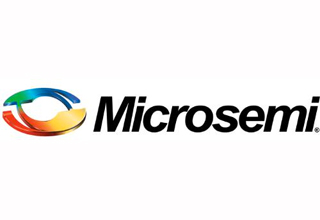 Microsemi Corporation has announced three new devices in its portfolio of IEEE 1588 products, which include two single-channel ultralow jitter network synchronizers, ZL30721 and ZL3
Microsemi Corporation has announced three new devices in its portfolio of IEEE 1588 products, which include two single-channel ultralow jitter network synchronizers, ZL30721 and ZL3
Microsemi’s ZL30721, ZL30722 and ZL30723 each offer a combined hardware and software platform including IEEE 1588-2008 Precision Time Protocol (PTP) stack, synchronization algorithm and Microsemi’s system synchronizer clock generation hardware. They boast jitter performance of 0.25 pico seconds (ps) root mean square (rms) and integrated electrically erasable programmable read-only memory (EEPROM) for self-configuration at start-up. The single-channel ZL30722 device also features a compact 5×5 millimeter (mm) package. Combined, these features offer compelling solutions for space-constrained, high volume IEEE 1588 applications.
Microsemi’s ZL30721, ZL30722 and ZL30723 are ideal for a wide range of applications, including small cell routers and switches, broadband access, carrier Ethernet equipment and wireless equipment such as base stations and backhaul equipment, as well as smart grids and synchrophasors. Market research firm Infonetics is forecasting unit shipments of service provider small cells to grow at a compound annual growth rate (CAGR) of 35 percent between 2015 and 2018.
Microsemi’s protocol engine and time synchronization algorithm runs on a variety of host processor architectures and is combined with an accurate timestamping unit, such as a Microsemi 1588-capable PHY or switch, and one of the new system synchronizers to provide the complete IEEE 1588 implementation. The ZL30721 and ZL30722 have three input references and generate up to three differential, or six single-ended output clocks, while the ZL30723 has six input references and generates up to six differential or 12 single-ended output clocks.
Key features include:
- Packet network frequency and phase synchronization
- Frequency accuracy for GSM, WCDMA-FDD, LTE-FDD base stations and small cells
- Frequency performance for ITU-T G.823 and G.824 synchronization interface, G.8261 PNT, PEC and CES interfaces
- Phase synchronization performance for WCDMA-TDD, TD-SCDMA, CDMA2000, LTE-TDD and LTE-A applications
- Client holdover and reference switching between multiple servers
- Support for new ITU-T packet clock, G.8263 PEC, G.8273.2 T-BC, T-TSC
- IEEE 1588 protocol engine
- IEEE 1588-2008 Annex J.3 (delay request response) and Annex J.4 (peer-to-peer) default profiles
- ITU-T G.8265.1 PTP telecom profile for frequency synchronization
- ITU-T G.8275.1 PTP telecom profile for phase/time synchronization with full timing support from the network
- IEEE C37.238-2011 power profile requirements with grandmaster, boundary clock and slave only ordinary clock functionality
- Low-bandwidth digital phase locked loop (DPLL) per channel
- Programmable bandwidth from 0.1Hz to 500Hz
- Hitless reference switching
- High-resolution holdover averaging
- Numerically controlled oscillator mode
- Low-jitter fractional-N APLL and three outputs per channel
Microsemi Corporation
microsemi.com

Leave a Reply